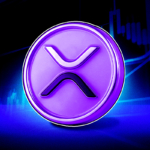Peter Schiff Doubles Down: Bitcoin Crash Is Just the Beginning
Peter Schiff – Bitcoin’s sharp flash crash on Friday is still reverberating across the crypto market, and not everyone is calling it a dip to buy. Renowned gold advocate and financial commentator Peter Schiff warned investors that the sell-off was more than just market noise—it was a “warning.”
“Crypto buyers are in for a rude awakening and will soon learn a very valuable but expensive lesson,” Schiff stated, doubling down on his long-standing skepticism toward digital assets.
The crash followed escalating trade tensions between the U.S. and China, which sent Bitcoin and U.S. equities into a tailspin. The U.S. government’s announcement of 100% tariffs on Chinese goods dealt a major blow to investor sentiment, triggering a staggering $19 billion in liquidations across crypto markets. Notably, Fundstrat’s Tom Lee suggested this figure might even be underestimated.
A Recovery That’s Already Losing Steam
Bitcoin and other cryptocurrencies experienced a brief relief rally after signs emerged that the White House may be open to trade negotiations with China. However, that optimism quickly faded. As of today, Bitcoin has dropped to an intraday low of $113,030, according to CoinGecko, erasing part of its recent gains.
Both crypto and equities remain highly reactive to geopolitical headlines, underscoring the fragile market environment.
Gold Soars Past $4,100 as Bitcoin Wobbles
While Bitcoin struggles for direction, gold has surged to a new peak above $4,100. For Schiff, this rally is yet another sign that Bitcoin is not the “digital gold” it claims to be. He cautioned, “The bottom can drop out of Bitcoin at any time.”
With the much-anticipated “Uptober” failing to deliver a strong performance so far, the odds of Bitcoin outperforming gold in 2025 appear increasingly slim.

































